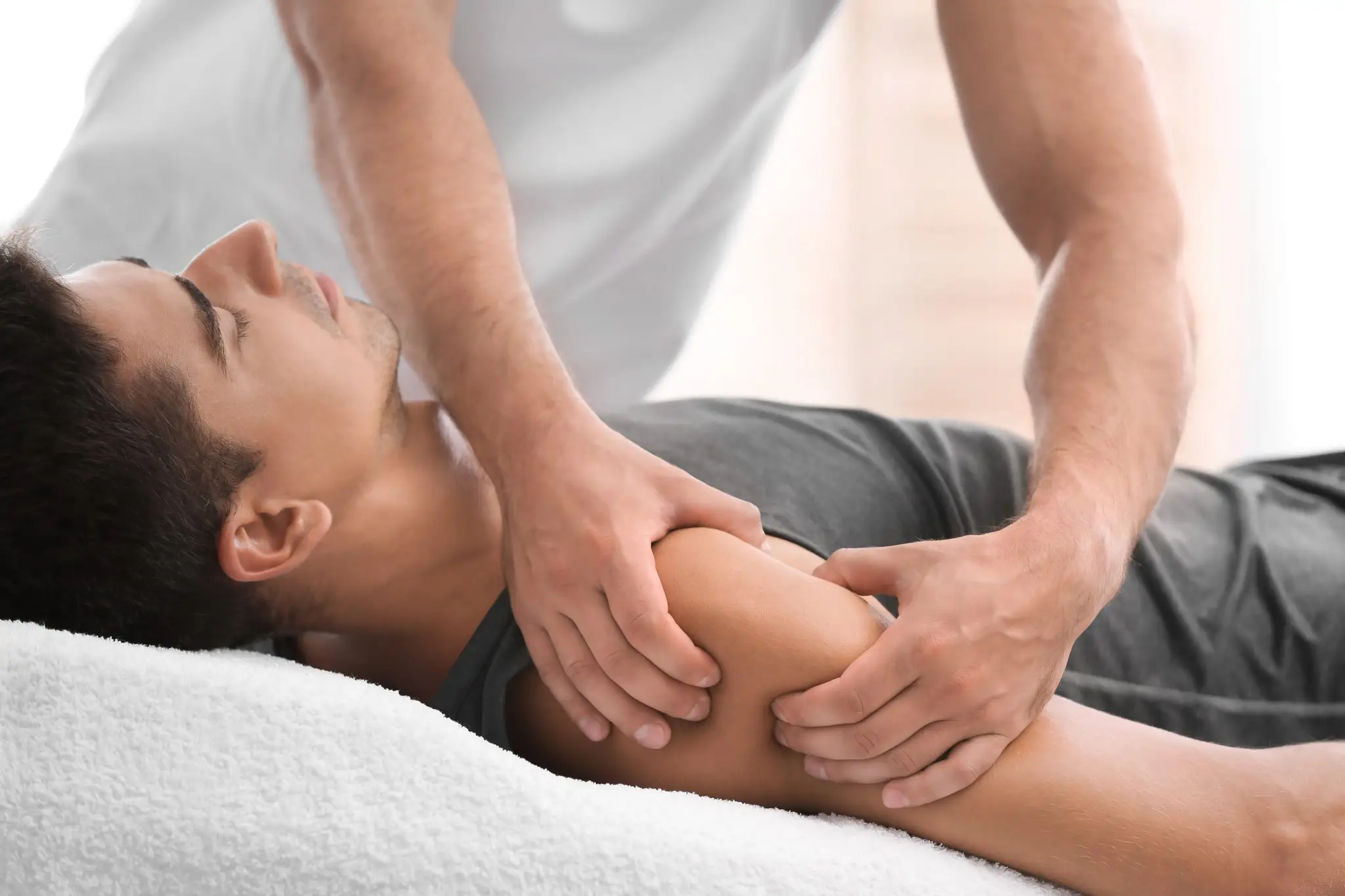Avant-Garde, Professional Physical Therapy in NYC, offers the specialized form of physical therapy called manual or sometimes manipulative therapy. Manual therapy is used to treat musculoskeletal conditions and the associated pain that arises from these conditions. Manual therapy, performed by a licensed professional, involves using their hands to perform kneading, joint mobilization, and muscle manipulation.
Before instituting manual therapy, we perform a full diagnostic evaluation to determine the source of your pain. A multidisciplinary approach is often needed to offer patients the best results. Once the source of pain and discomfort have been identified, a treatment plan that both addresses the underlying cause and treats the associated pain is instituted as quickly as possible.
Conditions treated with manual therapy
Research is continuously finding new potential benefits to manual therapy, and there is a wide array of conditions that benefit from manual therapy. Some of the most common uses for this type of therapy include:
- Lower back pain caused by disc herniation, facet joints, spinal stenosis, and other lumbar disorders.
- Neck pain can arise from disc herniation, facet arthropathy, stenosis, and muscle spasms.
- Thoracic spine problems created by rib restrictions, arthropathy, and disc herniations
- Migraines and tension headaches
- Temporomandibular joint (TMJ) dysfunction
- Fibromyalgia
- Shoulder pain arising from a frozen shoulder, impingements, or a rotator cuff injury
- Knee pain that results from arthritis, patellofemoral dysfunction, surgical recovery from a knee replacement, and injury to ligaments and tendons of the knee.
- Hip pain caused by bursitis, surgical hip replacement, hip impingement, and myofascial pain.
- Strains and sprains to any joint in the body
- Conditions that cause muscle spasms or spasticity of the muscles
The above list is by no means a comprehensive list of all the conditions that can benefit from manual therapy. Your doctor or therapist may prescribe manual therapy as an adjunct therapy to a variety of disorders and conditions. There are promising results about the use of manual therapy in dozens of conditions that cause pain and a decreased range of motion.
Why manual therapy is used to treat pain
At its core, manual therapy is a certified practitioner using their hands to identify pressure points, joint dysfunction, muscle tension, and muscle spasms. Once the areas of concern are identified, the practitioner can then put specific amounts of pressure on those areas to relieve pain or perform manipulations to realign the spine or joints.
Manual therapy has few potentially adverse side effects. It has proven to be highly effective in treating different types of musculoskeletal pain and improving the range of motion for patients. Manual therapy techniques use two types of movement:
- Mobilization—a licensed practitioner twists, pulls and pushes bones and joints into specific positions. These adjustments assist in reducing pain by loosening tissue and improving the range of motion in the adjusted area.
- Soft tissue work—practitioners use massage to relax muscles, increase circulation, and break up scar tissue. Soft tissue work often provides immediate pain relief to patients.
Both acute and chronic conditions can benefit from the use of manual therapy. Musculoskeletal conditions often lead to pain, loss of function, poor posture, limited range of motion, and limited movement due to pain. Manual therapy is a safe and effective means of treatment with few side effects. When used in conjunction with other forms of physical therapy, manual therapy can help restore function and reduce or resolve pain.
Functional independence
Functional Independence Measurement (FIM) is a tool used by physical therapists to measure overall independence throughout treatment or rehabilitation. Eighteen specific tasks are assessed to measure progress throughout a treatment program. The tasks include basic activities such as walking, overall mobility, self-care, and communication.
The test is divided into six categories:
- Self-care
- Sphincter Control
- Communication
- Mobility
- Locomotion
- Social Cognition
Physical therapists can use the FIM to measure the progress of each patient throughout the treatment regimen and identify areas that need more work. Each category is scored on a 1 to 7 scale, with one being complete dependence to complete the tasks and seven meaning full independence. Your licensed professional will work with you to establish reasonable and attainable goals in achieving pain control and independence.


